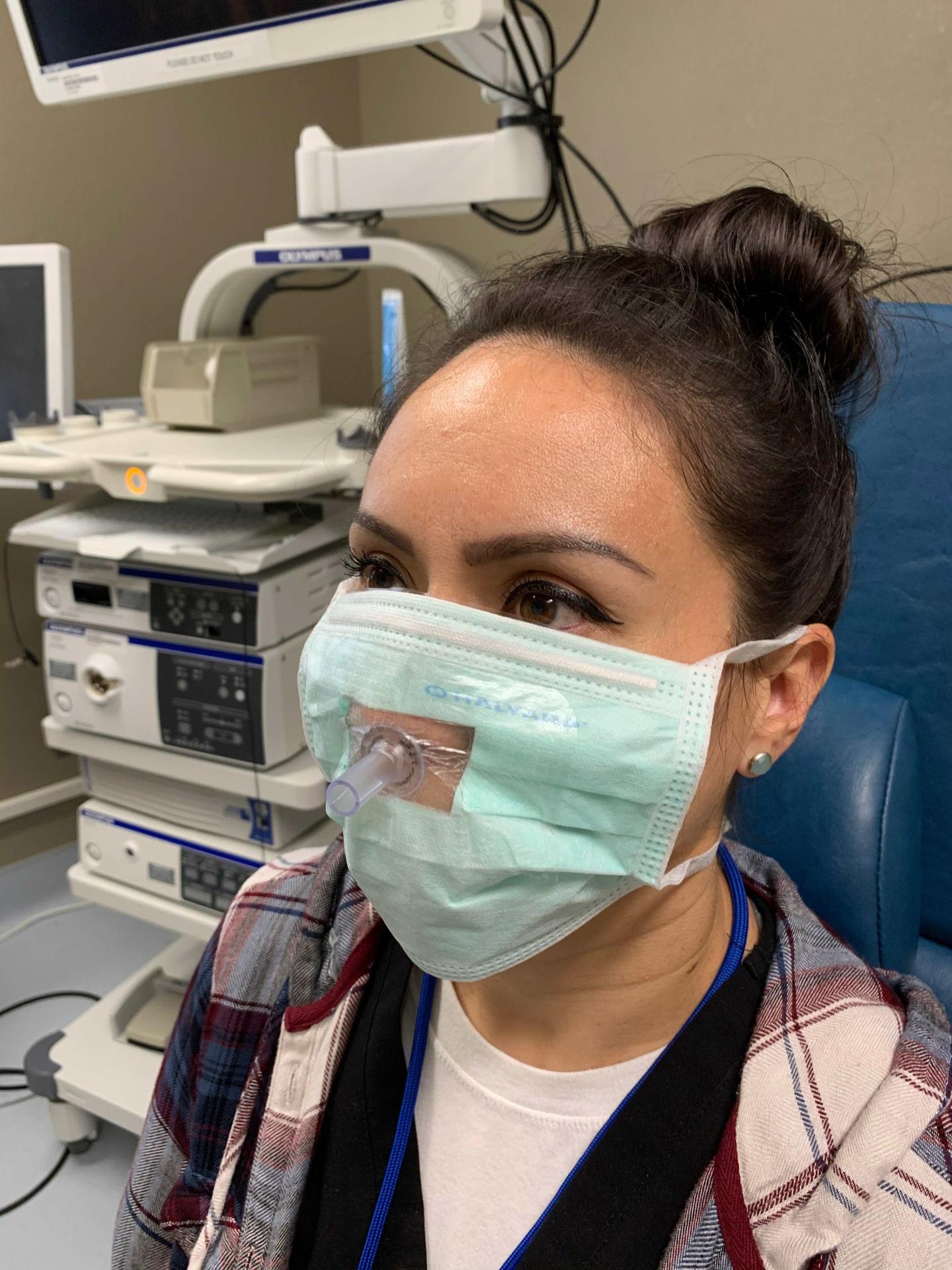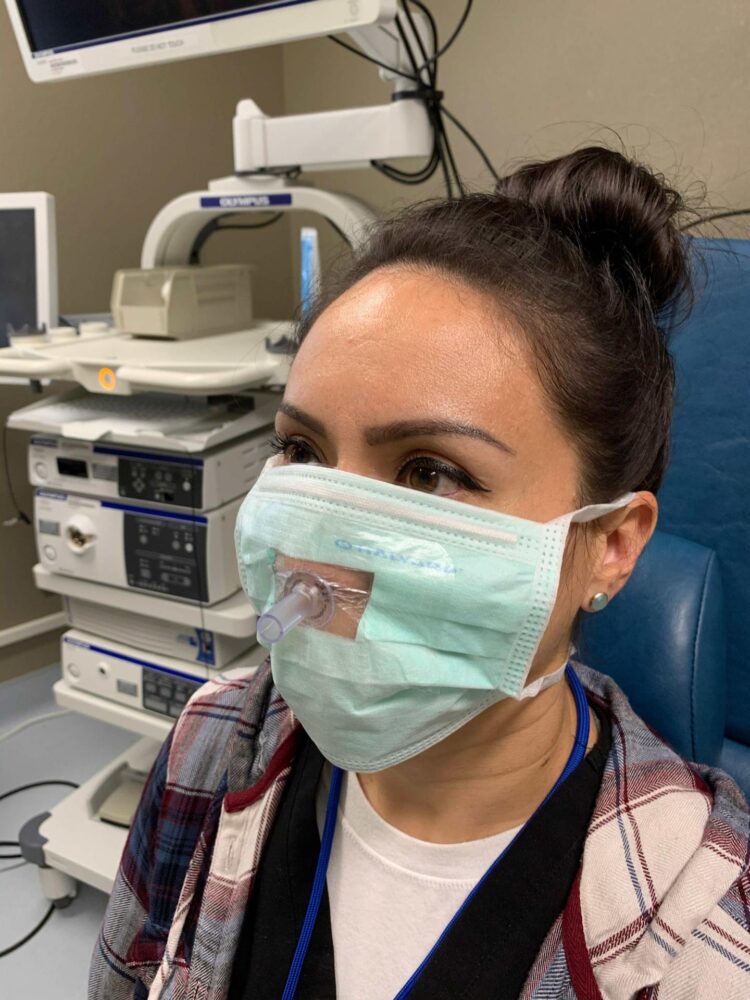VA seeking companies to license, manufacture

Credit: Dr. Scott Fuller/VA
SACRAMENTO, Calif. – An ear, nose, and throat doctor has invented a simple mask design that significantly improves safety during aerosol-generating procedures of the head and neck.
The novel coronavirus plummeted the number of patients Dr. Scott Fuller was seeing per day to one, or maybe two, per day.
“I’d been sitting in my office quite a lot at that point in time because we just weren’t able to do anything,” Fuller said in an interview on Friday. “We weren’t able to see patients unless they were emergent patients in our clinic, and if we were seeing patients and had to do an endoscopy, we had to get into N95, goggles, face shields, all kinds of PPE.”
Fuller specializes in head and neck cancer at the VA hospital in Sacramento. In late April, using scissors, he modified a surgical mask, installing a nasal tube and a transparent window for patients to wear. Now it allows him to see a higher number of patients, safely.
Tech Transfer Business Opportunity
Fuller is now working to patent the invention and quickly transfer it to an industry partner who can begin its commercialization and mass production.
After building a handful of his own prototypes, Fuller is now working with the VA’s Human Engineering Research Labs in Pittsburgh, which recently sent him a shipment of advanced prototypes.
Federal law allows VA inventions to be licensed to businesses or entrepreneurs. Once licensed, an invention can be taken to market.
Fuller is working with the VA Tech Transfer Program to submit a patent application and identify companies that have the ability to produce the mask for widespread use.
As the VA national partnership intermediary, TechLink is supporting the VA’s outreach. Jonathan Baker, a senior technology manager at TechLink, has interviewed Dr. Fuller and is facilitating licensing conversations with companies.
“It’s a timely, useful invention with an existing market,” Baker said. “Its simplicity makes it manufacturable and marketable.”
Companies can now read Baker’s summary of the technology and contact him directly.
A Necessary Tool
Ear, nose, and throat doctors are, like others in the medical professions, at an increased risk of infection by the novel coronavirus, yet need to see patients who may or may not be carrying the coronavirus.
Viral particles can go airborne during endoscopic examinations, where a fiber-optic camera is inserted into the mouth or nose of a patient. That’s why Fuller added the transparent window, so doctors can see the patient’s nose (or mouth) during the procedure.
After an endoscopy, to completely clean an examination room, it has to be left empty, for as long as three hours, while the ventilation system changes out the air.
Fuller’s new mask eliminates the downtime by blocking any droplets or aerosol particles from leaving the patient, who can put the mask on just as they would any other surgical mask before coming in.
The mask also allows health care providers to safely reduce their “PPE burn rate” for routine endoscopic examinations.
But most importantly it allows doctors to see and treat their patients.
“We have a lot of tools within our specialty that have been categorized as aerosol-generating,” Fuller said. “This problem spans outside of COVID-19 to influenza and other respiratory maladies. But specifically, with COVID-19, I saw a shutdown, essentially, of our clinic and our ability to evaluate our patients.”
###
Media Contact
Troy Carter
[email protected]
Original Source
https:/





